mmcartalk
Expert
- Messages
- 4,155
- Reactions
- 2,675
MM Retro-Write-Up: Chevrolet Corvair

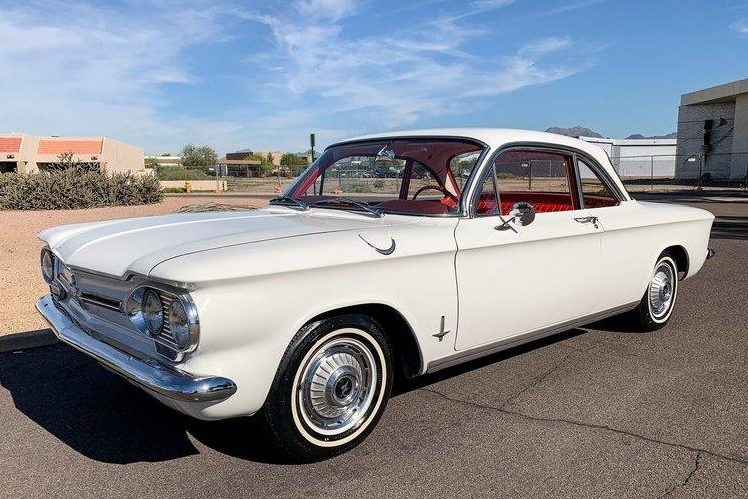
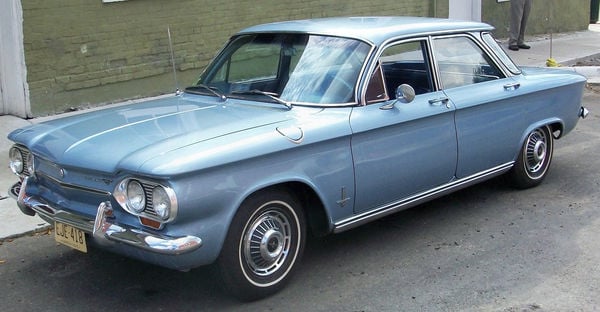
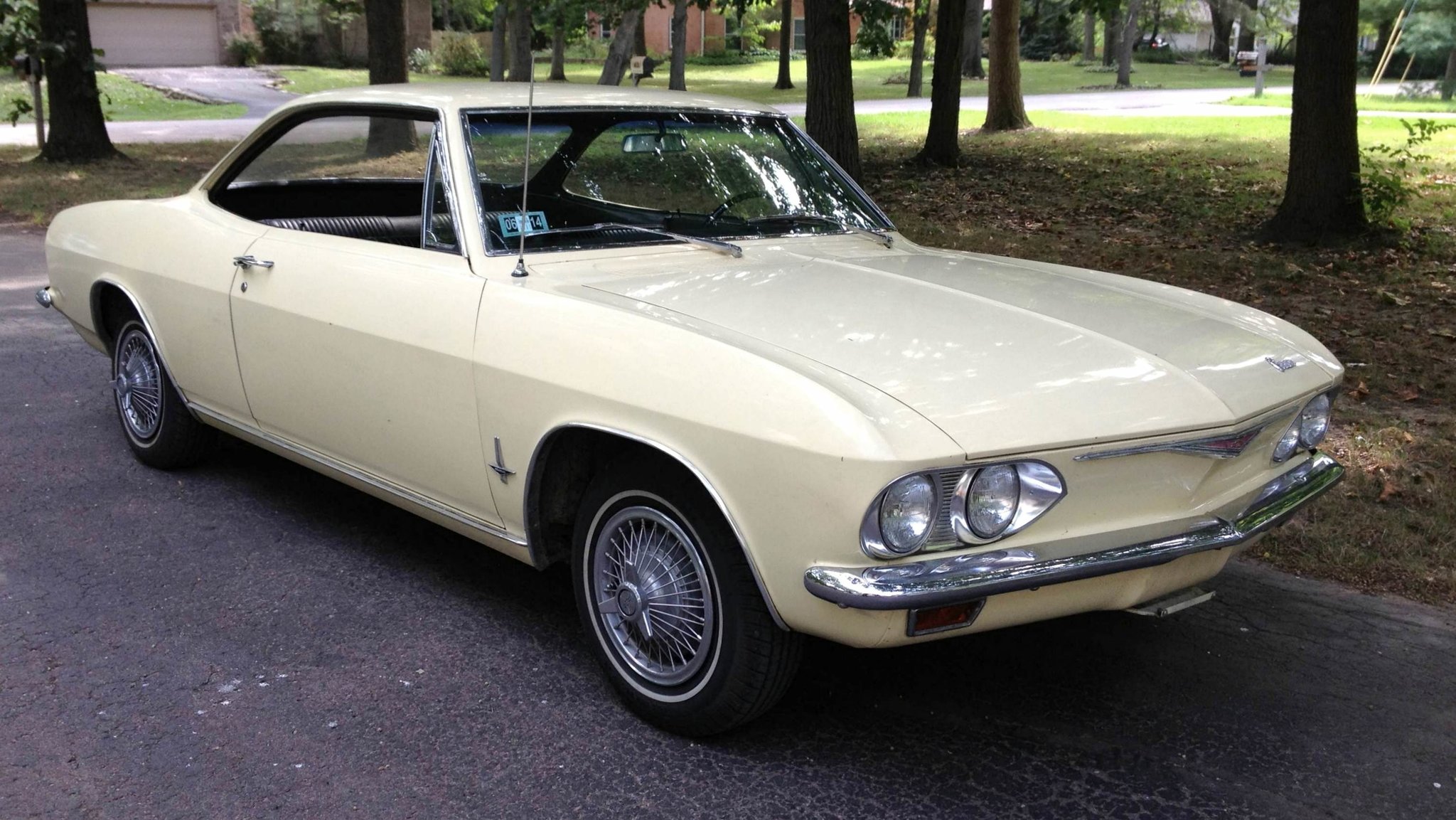
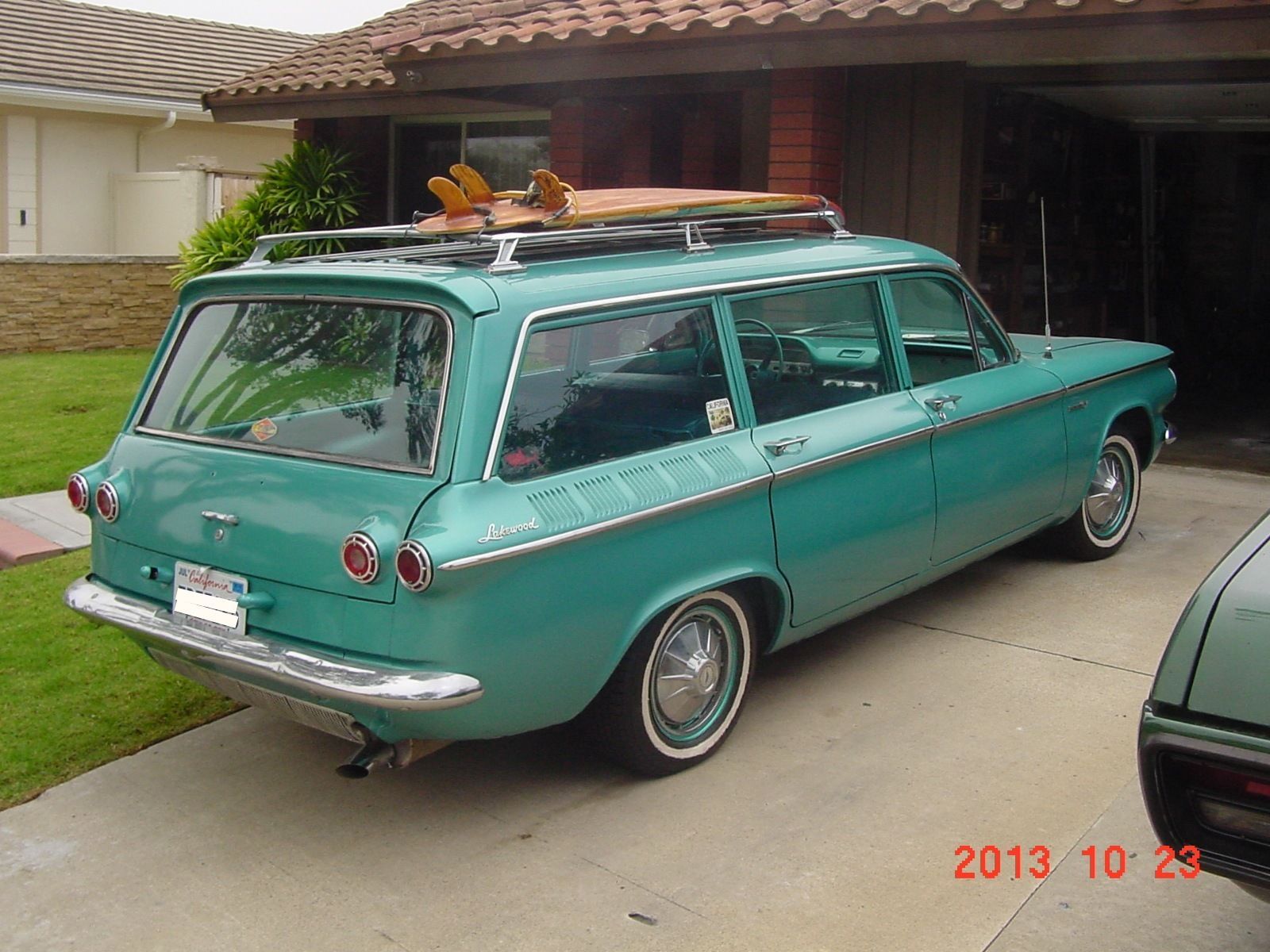
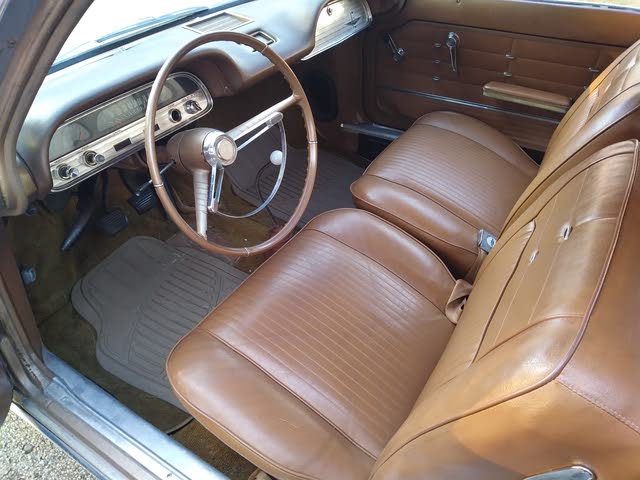

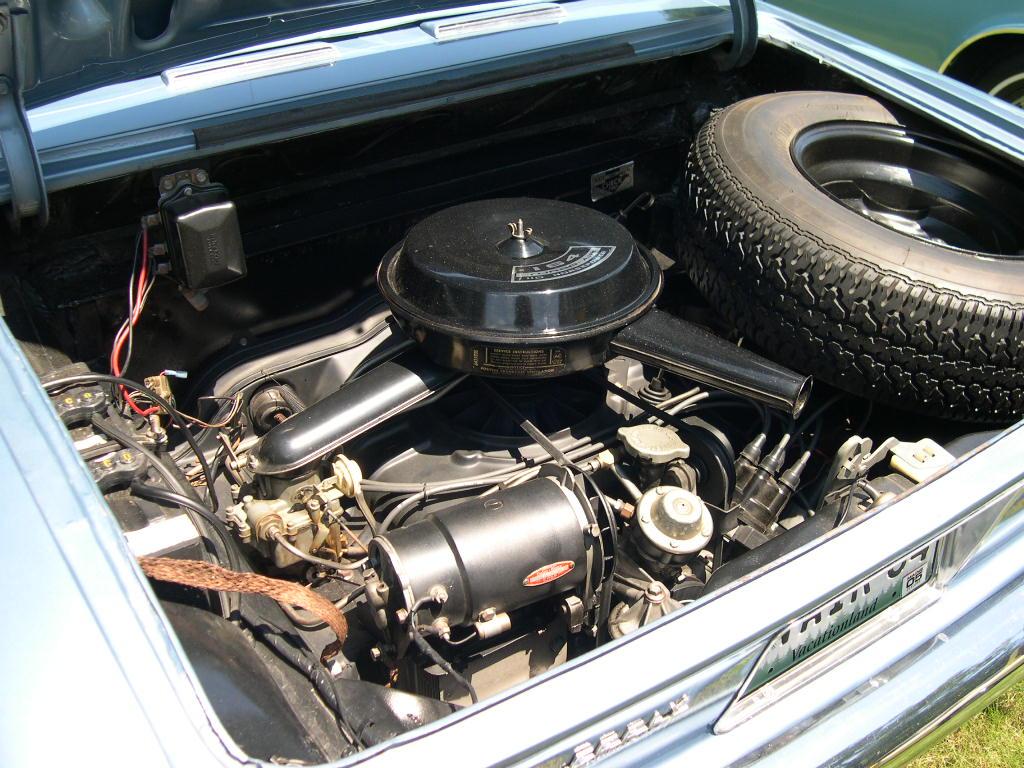
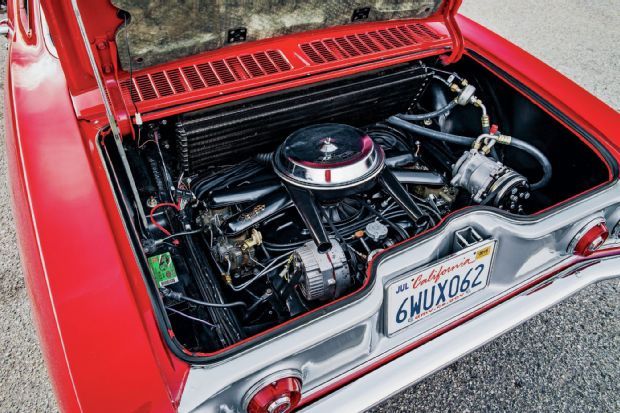
In the late 1950s, the majority of Americans were sold on the giant, softly-sprung, chrome-laden land-yachts that dominated the country, particularly in the garages and driveways of Suburbia that, back then, was starting to offer a different, Leave-it-to-Beaver scenario to either the traditional big-city or farm/rural life. However, a growing number of car-buyers were becoming attracted to the idea of a domestic compact car that would offer better handling, fuel-mileage, and easier parking. Strong signs of this were evident, not only in the continuing popularity of the compact Nash-Rambler, Metropolitan, and other smaller cars from manufacturers like Studebaker, Hudson, the wildly-popular 1957 Chevy Bel-Air sedan/Nomad wagon which was somewhat smaller than its Ford/Plymouth competition, and, of course, the growing popularity of the air-cooled rear-engined VW Beetle, which sold not only on the basis of its size/economy and low price, but also on the noted German build-quality of that period, which the domestics largely lacked.
Noting these sales-trends, the managers of the Big Three (Ford, GM, Chrysler), decided that the time had come for Detroit to introduce its own versions of downsized, compact cars and try and re-gain the share of the pie that was being lost to VW and the independents. By 1960, the first-generation of these new Big Three compacts were ready...the Ford Falcon, Chevy Corvair, and Plymouth Valiant (Dodge was to get its Lancer version of the Valiant not long afterward, and Mercury/Buick/Oldsmobile/Pontiac would also introduce compacts in the early 1960s. The Falcon and Valiant were conventional front-engine/rear-drive compacts, but used unibody construction instead of the more common (but not universal, particularly at Chrysler) body-on-frame construction of that period. (I first learned to drive on Valiants, and may do a write-up on them soon). The Chevy Corvair, though, was anything BUT conventional, although, in truth, it simply copied many of the features of the VW Beetles of that time in a longer, lower, wider package. GM was at the height of its power and influence back then, and, unlike Ford and Chrysler, had the funds and resources to do something radically different...and, by Detroit standards, radical it was.
The Corvair, like the Beetle, used a rear-engined /air-cooled platform, a swing-axle independent rear suspension that (like the Beetle) sometimes produced squirrelly or dangerous handling, and, like the Falcon and Valiant, a unitized body...the first unitized body to be done by GM's large Fisher Body Division. The Corvair, however, differed from the Beetle by using the unitized body.....the Beetle of that period was a body-on-frame. The Corvair, as befit its larger size and heavier weight over the Beetle, used a horizontal air-cooled flat-six of 80 HP to the Beetle's 40-53 HP. (later turbocharged versions of the Corvair would have up to 150 HP). The actual name "Corvair" comes from a consolidation of the "Corvette" and "Bel-Air" names that were used on other Chevy products.
Right away, the Corvair got off to a bad start with the American public. Except for some of the drivers that had prior experience with the Beetle, many Americans were simply not accustomed to the way this car drove and handled. In addition, it had some quirky and potentially dangerous engineering and design faults...which Ralph Nader helped publicize, particularly in his famous book "Unsafe at any Speed", which I have in my automotive library, and whose reading I recommend. Like it or not, the casualty-figures in killed/wounded for the Corvair, particularly the first-generation 1960-63 models before some changes were made in 1964, steadily mounted up, even more so than most other American-designed vehicles.
And, even discounting the benefit of today's hindsight, it was easy to see why. IMO, much of what was wrong with this car could be attributed to either common-sense or simple grade-school Physics...Nader's criticism of the car, to a large extent, although I still recommend its reading, merely stated the obvious. The relatively large, heavy rear-engine design concentrated a lot of weight in the back of the car, which the relatively primitive tires, suspensions and steering systems of the period had a difficult time managing. The rear-end not only had a tendency to sharply oversteer on sharp cornering, but the swing-axle suspension/driveshafts, in back, allowed the rear tires, at a sharp angle, to tuck under the lower-rear-part of the car, creating a potentially dangerous condition that could suddenly, without warning, toss the car into a roll-over....and, remember, in those days, seat-belts for restraint were not common. The light front end, with little else but air and a spare tire in the front trunk (some versions had the spare tire in back with the engine), placed little weight over the front wheels for stability and traction up front....while that made it good for winter-traction with the weight of the engine in back over the drive-wheels, it made the car less-stable on dry pavement. The light weight up front also contributed to the front wheels locking up prematurely on some heavy-braking, with loss of steering control, though that could (?) sometimes be beneficial for preventing strong forward weight-transfer and nose-dive on heavy braking. On the early Corvair models, the first heating/defrosting system, in response to the Beetle's annoying habit of never really getting warm inside on a cold day, used a separate, gas-burning heater, inside the cabin.....the potential fire-dangers of this are obvious, and go without saying. The steering column was also a common source of injury on early Corvairs. The way it was designed, the joints for it would cause it, in a major impact, to jerk back and upwards.....right into the driver's face or chest. The engine, of course, was air-cooled, and used a system where, if the exhaust system was not diligently maintained and/ parts repaired when needed, the tiniest leak or crack in the system could allow toxic carbon-monoxide fumes to leak into the cabin.
In addition to safety-issues, reliability could also be problem on these cars, as they represented a radically different direction from the usual Detroit fare, with a lot of components and designs that had not been perfected yet. One thing that (seemingly) was never perfected was the design of the engine's oil-seals. My first significant job, in high-school (I graduated in 1970), was working in a military gas-station near the Pentagon, where a huge number of cars came in and out every day, and we sold an easy 300,000 gallons of gas a month. Inevitably, when Corvairs would come in, whether the early 60s or the later-60s versions (the car was dropped after 1969), I'd have to make sure we had oil for them available, because, almost inevitably, when I'd check the level on the dipstick, they would be down anywhere from one to three quarts. Those oil-seals constantly failed, and, if the owner neglected them long enough or didn't get them repaired, they would splatter the inside of the engine-compartment (and cooling-air-vents) in back with oily gunk...a mess.
The Corvair's problems were, IMO (seemingly) a result of four things. First, a lack of prior experience with this type of design on the part of GM's designers. Second, the typical cost-cutting in auto design prevalent back then, where a simple $2 part, often needed, was left out if the bean-counters thought they could get away with it. Three, the lack of experience with many American drivers with smaller air-cooled/rear-engned vehicles, and their instinct to drive them in the same manner they did front-engine cars. Four, the relative lack of electronic news-communication that we have today, where the car's major faults could be publicized quickly to get the word out so people knew about them....although Nader's book helped. News, in those days, was brief, overlapping programs each night on the three major networks, and that was it...you either saw it or you didn't.
To be fair, however, GM did attempt, at first, to make improvements to the Corvair's faults, by experimenting with different recommended front/rear tire-pressures and suspension-alignments to address the handling deficiencies....with only limited success. The hazardous cabin gas-heater was tossed on later models and replaced with a more VW Beetle-like system..at the cost of less heat inside in the winter. The steering column was redesigned. The dangerous and unstable swing-axles in back were replaced by a safer system that kept the rear tires more perpendicular to the ground, with less potential tuck-under. Corvair Monza and turbocharged, sport-oriented Spyder versions were introduced to try and make the car appeal more to enthusiasts.....which they did, to some extent, but not enough to significantly keep sales numbers going in adequate numbers. But, these was generally Band-Aid fixes to what were clearly deeper problems underneath. By the mid-1960s, GM knew that the car in the long run, was basically finished....an entirely new, thoroughly-conventional Nova/Chevy II compact had been introduced, which was sold, at first, alongside the Corvair in Chevy showrooms, in an attempt to stay in competition with the successful Ford Falcon and Plymouth Valiant. The Nova succeeded where the Corvair failed, and even introduced powerful SS muscle-car versions, with engines up to 396 c.i. (6.5L). The Corvair, despite some improvements with time, never re-gained the public confidence once the car's poor safety/reliability record (and Nader's book) were made known, and the car was laid to rest in the automotive cemetary after 1969.
And, as Always, Happy-Car-Memories.

MM
__________________

DRIVING IS BELIEVING










In the late 1950s, the majority of Americans were sold on the giant, softly-sprung, chrome-laden land-yachts that dominated the country, particularly in the garages and driveways of Suburbia that, back then, was starting to offer a different, Leave-it-to-Beaver scenario to either the traditional big-city or farm/rural life. However, a growing number of car-buyers were becoming attracted to the idea of a domestic compact car that would offer better handling, fuel-mileage, and easier parking. Strong signs of this were evident, not only in the continuing popularity of the compact Nash-Rambler, Metropolitan, and other smaller cars from manufacturers like Studebaker, Hudson, the wildly-popular 1957 Chevy Bel-Air sedan/Nomad wagon which was somewhat smaller than its Ford/Plymouth competition, and, of course, the growing popularity of the air-cooled rear-engined VW Beetle, which sold not only on the basis of its size/economy and low price, but also on the noted German build-quality of that period, which the domestics largely lacked.
Noting these sales-trends, the managers of the Big Three (Ford, GM, Chrysler), decided that the time had come for Detroit to introduce its own versions of downsized, compact cars and try and re-gain the share of the pie that was being lost to VW and the independents. By 1960, the first-generation of these new Big Three compacts were ready...the Ford Falcon, Chevy Corvair, and Plymouth Valiant (Dodge was to get its Lancer version of the Valiant not long afterward, and Mercury/Buick/Oldsmobile/Pontiac would also introduce compacts in the early 1960s. The Falcon and Valiant were conventional front-engine/rear-drive compacts, but used unibody construction instead of the more common (but not universal, particularly at Chrysler) body-on-frame construction of that period. (I first learned to drive on Valiants, and may do a write-up on them soon). The Chevy Corvair, though, was anything BUT conventional, although, in truth, it simply copied many of the features of the VW Beetles of that time in a longer, lower, wider package. GM was at the height of its power and influence back then, and, unlike Ford and Chrysler, had the funds and resources to do something radically different...and, by Detroit standards, radical it was.
The Corvair, like the Beetle, used a rear-engined /air-cooled platform, a swing-axle independent rear suspension that (like the Beetle) sometimes produced squirrelly or dangerous handling, and, like the Falcon and Valiant, a unitized body...the first unitized body to be done by GM's large Fisher Body Division. The Corvair, however, differed from the Beetle by using the unitized body.....the Beetle of that period was a body-on-frame. The Corvair, as befit its larger size and heavier weight over the Beetle, used a horizontal air-cooled flat-six of 80 HP to the Beetle's 40-53 HP. (later turbocharged versions of the Corvair would have up to 150 HP). The actual name "Corvair" comes from a consolidation of the "Corvette" and "Bel-Air" names that were used on other Chevy products.
Right away, the Corvair got off to a bad start with the American public. Except for some of the drivers that had prior experience with the Beetle, many Americans were simply not accustomed to the way this car drove and handled. In addition, it had some quirky and potentially dangerous engineering and design faults...which Ralph Nader helped publicize, particularly in his famous book "Unsafe at any Speed", which I have in my automotive library, and whose reading I recommend. Like it or not, the casualty-figures in killed/wounded for the Corvair, particularly the first-generation 1960-63 models before some changes were made in 1964, steadily mounted up, even more so than most other American-designed vehicles.
And, even discounting the benefit of today's hindsight, it was easy to see why. IMO, much of what was wrong with this car could be attributed to either common-sense or simple grade-school Physics...Nader's criticism of the car, to a large extent, although I still recommend its reading, merely stated the obvious. The relatively large, heavy rear-engine design concentrated a lot of weight in the back of the car, which the relatively primitive tires, suspensions and steering systems of the period had a difficult time managing. The rear-end not only had a tendency to sharply oversteer on sharp cornering, but the swing-axle suspension/driveshafts, in back, allowed the rear tires, at a sharp angle, to tuck under the lower-rear-part of the car, creating a potentially dangerous condition that could suddenly, without warning, toss the car into a roll-over....and, remember, in those days, seat-belts for restraint were not common. The light front end, with little else but air and a spare tire in the front trunk (some versions had the spare tire in back with the engine), placed little weight over the front wheels for stability and traction up front....while that made it good for winter-traction with the weight of the engine in back over the drive-wheels, it made the car less-stable on dry pavement. The light weight up front also contributed to the front wheels locking up prematurely on some heavy-braking, with loss of steering control, though that could (?) sometimes be beneficial for preventing strong forward weight-transfer and nose-dive on heavy braking. On the early Corvair models, the first heating/defrosting system, in response to the Beetle's annoying habit of never really getting warm inside on a cold day, used a separate, gas-burning heater, inside the cabin.....the potential fire-dangers of this are obvious, and go without saying. The steering column was also a common source of injury on early Corvairs. The way it was designed, the joints for it would cause it, in a major impact, to jerk back and upwards.....right into the driver's face or chest. The engine, of course, was air-cooled, and used a system where, if the exhaust system was not diligently maintained and/ parts repaired when needed, the tiniest leak or crack in the system could allow toxic carbon-monoxide fumes to leak into the cabin.
In addition to safety-issues, reliability could also be problem on these cars, as they represented a radically different direction from the usual Detroit fare, with a lot of components and designs that had not been perfected yet. One thing that (seemingly) was never perfected was the design of the engine's oil-seals. My first significant job, in high-school (I graduated in 1970), was working in a military gas-station near the Pentagon, where a huge number of cars came in and out every day, and we sold an easy 300,000 gallons of gas a month. Inevitably, when Corvairs would come in, whether the early 60s or the later-60s versions (the car was dropped after 1969), I'd have to make sure we had oil for them available, because, almost inevitably, when I'd check the level on the dipstick, they would be down anywhere from one to three quarts. Those oil-seals constantly failed, and, if the owner neglected them long enough or didn't get them repaired, they would splatter the inside of the engine-compartment (and cooling-air-vents) in back with oily gunk...a mess.
The Corvair's problems were, IMO (seemingly) a result of four things. First, a lack of prior experience with this type of design on the part of GM's designers. Second, the typical cost-cutting in auto design prevalent back then, where a simple $2 part, often needed, was left out if the bean-counters thought they could get away with it. Three, the lack of experience with many American drivers with smaller air-cooled/rear-engned vehicles, and their instinct to drive them in the same manner they did front-engine cars. Four, the relative lack of electronic news-communication that we have today, where the car's major faults could be publicized quickly to get the word out so people knew about them....although Nader's book helped. News, in those days, was brief, overlapping programs each night on the three major networks, and that was it...you either saw it or you didn't.
To be fair, however, GM did attempt, at first, to make improvements to the Corvair's faults, by experimenting with different recommended front/rear tire-pressures and suspension-alignments to address the handling deficiencies....with only limited success. The hazardous cabin gas-heater was tossed on later models and replaced with a more VW Beetle-like system..at the cost of less heat inside in the winter. The steering column was redesigned. The dangerous and unstable swing-axles in back were replaced by a safer system that kept the rear tires more perpendicular to the ground, with less potential tuck-under. Corvair Monza and turbocharged, sport-oriented Spyder versions were introduced to try and make the car appeal more to enthusiasts.....which they did, to some extent, but not enough to significantly keep sales numbers going in adequate numbers. But, these was generally Band-Aid fixes to what were clearly deeper problems underneath. By the mid-1960s, GM knew that the car in the long run, was basically finished....an entirely new, thoroughly-conventional Nova/Chevy II compact had been introduced, which was sold, at first, alongside the Corvair in Chevy showrooms, in an attempt to stay in competition with the successful Ford Falcon and Plymouth Valiant. The Nova succeeded where the Corvair failed, and even introduced powerful SS muscle-car versions, with engines up to 396 c.i. (6.5L). The Corvair, despite some improvements with time, never re-gained the public confidence once the car's poor safety/reliability record (and Nader's book) were made known, and the car was laid to rest in the automotive cemetary after 1969.
And, as Always, Happy-Car-Memories.

MM
__________________

DRIVING IS BELIEVING

